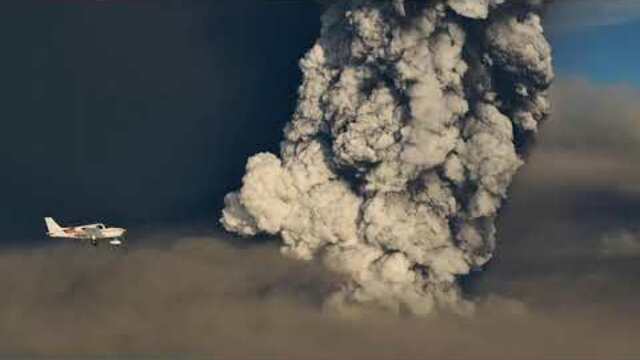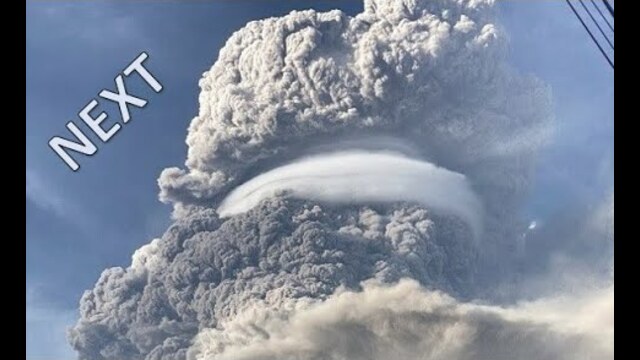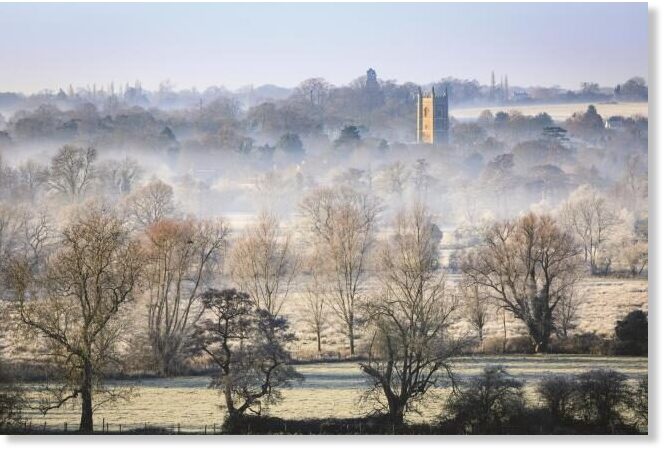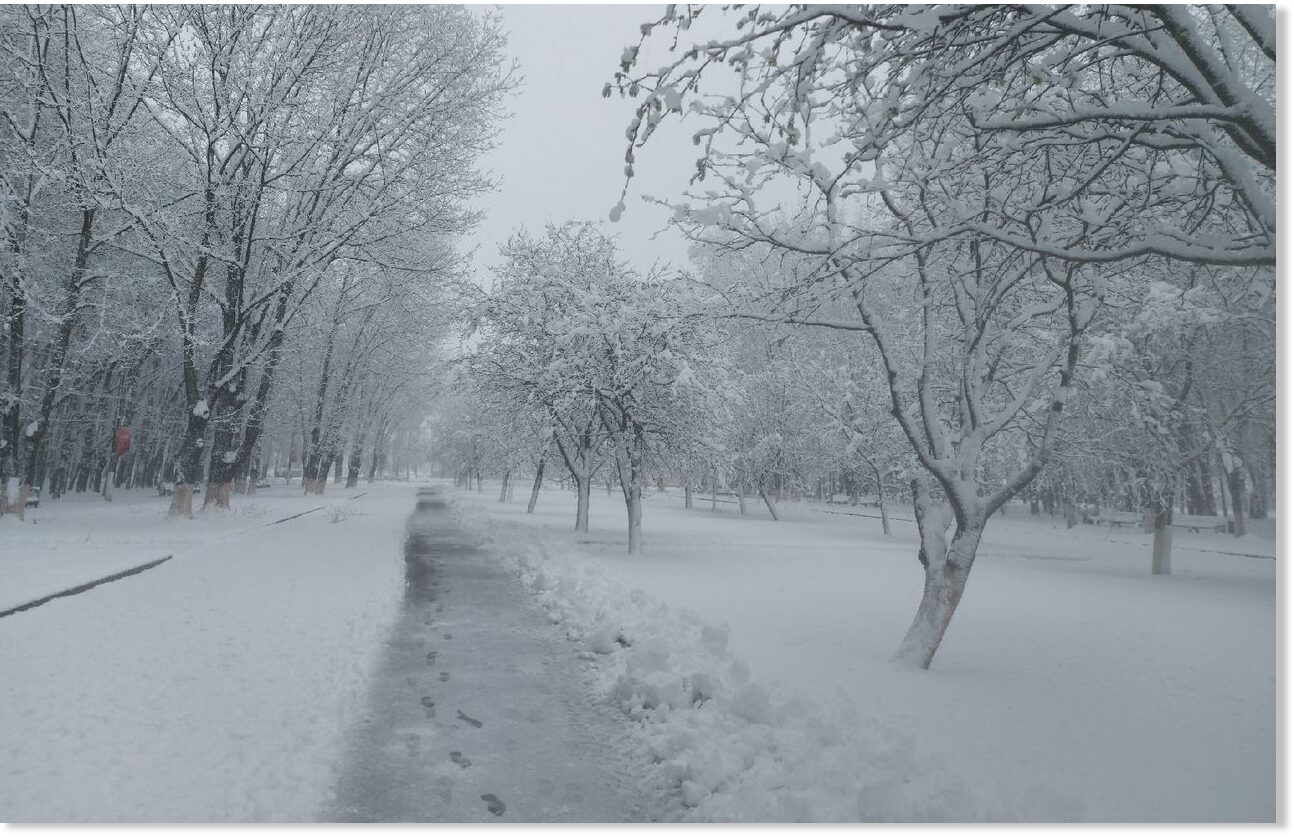You are using an out of date browser. It may not display this or other websites correctly.
You should upgrade or use an alternative browser.
You should upgrade or use an alternative browser.
The Ice Age Cometh! Forget Global Warming!
- Thread starter Gaby
- Start date
The historic cold blast settling into Alaska at the end of the week sent temperatures plummeting far below zero, so cold, in fact, as to topple several long-standing records.
Fairbanks dropped to a staggering 27 degrees below zero on Friday, smashing the century-old record of 16 below zero from 1911.

In this article (Sweden Axes Gates’s Mad Global Warming Scheme) Mr. Engdahl talks about ice age and the sun and volcanoes... Look what he says at the end of the article :
All the article here
Some 200 years ago we had the last Grand Solar Minimum period, known to scientists as the Dalton Minimum, in the beginning of the 19th century. In 1816, the cloud cover across the planet was so severe that it was known as the Year With No Summer.The Dalton Minimum lasted from circa 1790 – 1820. In 1815 a huge volcanic eruption at Mount Tambora in Indonesia, the most powerful volcanic eruption in recorded human history, spewed so much volcanic ash into the atmosphere that in 1816 Thomas Jefferson recorded in his weather diary in Virginia the absence of summer sun. It triggered extreme weather and harvest failures in many areas around the world. Frost and snow in North America during June 1816 destroyed most agriculture crops. Globally it was the worst famine of the 19th Century. The huge volumes of volcanic ash in the atmosphere lasting more than one year from Tambora reflected significant amounts of solar radiation, causing unseasonably cool summers that contributed to food shortages.
The evidence that we are in the early stages of a Grand Solar Minimum similar to that of the 19th Century or worse is compelling. Sumatra’s incredibly active Sinabung Volcano has exploded in spectacular fashion March 2, sending volcanic ash 40,000 feet high into the atmosphere. Particulates ejected to altitudes above 32,800 feet (10 km) –and into the stratosphere– have a direct cooling effect on the planet. Iceland, the Caribbean island of St. Vincent, and other eruptions in recent weeks suggest we may be in for far more dramatic climate shocks than the self-appointed global climate czar Bill Gates admits. Gates, the Davos World Economic Forum and countless grant-hungry climate “scientists” refuse to consider the solar reality, instead pursuing such mad projects as chemical dimming of the sun. The trillions of dollars projected to be spent on inefficient solar and wind energy, indicates their agenda has nothing to do with health of the planet, nor of us. We can be sure those scientists who advise Gates re fully aware of solar cycles.Give them credit on one point, they are masters of deception.
All the article here
That cold snap cost the French wine industry alone about 2 billion eur in lost grapes:Frost warnings have been issued to fruit growers in France, and it seems that the meandering jet stream is partly to blame.
France Declares Emergency as Freak Cold Snap Wipes Out One-Third of Wine Crop
Sputnik, 16 Apr 2021An estimated €2 billion-worth of production has been lost after an early warm spell that encouraged grape vines and fruit trees to blossom was followed by a cold snap that killed them off. That came after the industry lost €1 billion in exports last year due to the COVID-19 pandemic.
France has declared a national emergency after one-third wine production has been lost to rare spring frosts.
French Agriculture Minister Julien Denormandie hyperbolically described the crisis as "probably the greatest agricultural catastrophe of the beginning of the 21st century" this week, and the government declared an "agricultural emergency".
Frost warnings have been issued to fruit growers in France, and it seems that the meandering jet stream is partly to blame.
From Sky News Australia on the recent record freezing temperatures around the globe.
It includes a clip from Tony Heller (Real climate science) who notes that the same 'wavy jet stream' diagram being used by NOAA to explain these cold temps from the polar vortex due to 'global warming' was also being used back in the 1975 by Science News to explain 'global cooling' and the coming ice age.

Dr. Tim Ball has mostly been in the background these last number of years since his court case, however he still is posting on Twitter - many useful links that he picks up on (some of them have been posted here).
For instance, Ball recently posted this one on Twitter: Arctic seas jammed with new ice:
"The department in a report said sea ice in northern Canadian waters covered 1,040,000 square kilometres last year compared to 820,000 sq.km. Sea ice coverage in 2020 was larger than in 1998 or 2008.
Figures were based on satellite imagery. Researchers did not cite any figures compiled prior to 1968."
https://twitter.com/pplonia
For instance, Ball recently posted this one on Twitter: Arctic seas jammed with new ice:
"The department in a report said sea ice in northern Canadian waters covered 1,040,000 square kilometres last year compared to 820,000 sq.km. Sea ice coverage in 2020 was larger than in 1998 or 2008.
Figures were based on satellite imagery. Researchers did not cite any figures compiled prior to 1968."
https://twitter.com/pplonia
ADAPT 2030, posted 4/16/21 Subjects: Volcanos, La Nina, and hurricanes. (I was looking for someone to report on volcanic dust in the upper atmosphere)  and the second video is also adapt 2030 specifically “signs of volcanic cooling” Posted 2 days later on the 18th. He wanders off a bit, but it’s all good. Being in Phoenix ( presently in catastrophic drought level 4, and just pasted the hottest summer in history) it doesn't feel very wintery, but that's all part of the spotty weather as we enter into this time period. But, if the Beaufort Gyre lets go, then I suppose it could all change within a few weeks.
and the second video is also adapt 2030 specifically “signs of volcanic cooling” Posted 2 days later on the 18th. He wanders off a bit, but it’s all good. Being in Phoenix ( presently in catastrophic drought level 4, and just pasted the hottest summer in history) it doesn't feel very wintery, but that's all part of the spotty weather as we enter into this time period. But, if the Beaufort Gyre lets go, then I suppose it could all change within a few weeks.

 www.bitchute.com
www.bitchute.com

 www.bitchute.com
www.bitchute.com

Global Food Reduction Begins with the 2021 Hurricne Forecast
✅ Enjoy The Healthy Aging Support of Collagen 🔥 Get 51% Off Ageless Multi-Collagen Here ➡️ http://healthwithadapt2030.com This is my FAV trusted source ^^^^💪💪 2021 Hurricane forecast is based on continuing La Nina conditions in the Pacific, but there are huge irregularities in high and low...

Signs of Volcanic Cooling
✅ Enjoy The Healthy Aging Support of Collagen 🔥 Get 51% Off Ageless Multi-Collagen Here ➡️ http://healthwithadapt2030.com This is my FAV trusted source ^^^^💪💪 More volcanoes continue to erupt across the planet this week and some direct results are being seen in real time. Australis snow...
Calgary's springtime snowfall drops temperature to 0 C . APRIL 18
The weather outside sure is frightful, especially after the taste of summer Calgarians got on Saturday.
Within 24 hours, the 20 C weather on Saturday afternoon has now dropped to a steady 0 C and a snow shower.
The weather outside sure is frightful, especially after the taste of summer Calgarians got on Saturday.
Within 24 hours, the 20 C weather on Saturday afternoon has now dropped to a steady 0 C and a snow shower.
Its been pretty wild here in Australia for the last few weeks. Its not quite winter yet but it snowed in the mountain ranges last week which is a bit too early in April. And, I almost came down with a severe cold along with our cats who are still recovering. Lets see what the winter truly brings but I am expecting snow to hit the ground level at some areas.
From Adapt 2030:
Why Is This Information Being Released Now In 2021?
Artificial Intelligence has forecast Grand Solar Minimum level sunspot activity beginning now through 2050, this has made it through the main stream media. Interestingly, the same information was released in 2015 by Valentina Zharkova but denied and dismissed. Why is this solar activity information being released at this moment ? Is it to explain why all continents are experiencing crop damage and yield reductions from abnormal cold? My findings and thoughts are explained in the video. Thank you for watching.
Deep snow on April 29 in Tromsø, Norway
Also some noteworthy stories on the record April cold in the UK and record spring snow in central Russia.
-----------------------------------------------------------------

 www.sott.net
www.sott.net
THIS month was the coldest April for almost a century, UK weather experts have said.
The Met Office says frost and clear conditions combined for a chilly month, despite long spells of sunshine.
Provisional figures from the Met Office's National Climate Information Centre show April had the third lowest average temperature since records began back in 1884.
In fact, the average temperature in April was the lowest seen in Britain since 1922.
There were high levels of air frost, not seen since 1960.
According to the Met Office, the number of air frosts seen this month, 13, was more typical for December, January of February.
The ground frosted over on 22 days compared with an April average of 12 days.
--------------------------------------------------------------------------------

 www.sott.net
www.sott.net
Also some noteworthy stories on the record April cold in the UK and record spring snow in central Russia.
-----------------------------------------------------------------

Met Office says UK has seen coldest April since 1922
THIS month was the coldest April for almost a century, UK weather experts have said. The Met Office says frost and clear conditions combined for a chilly month, despite long spells of sunshine. Provisional figures from the Met Office's National...
THIS month was the coldest April for almost a century, UK weather experts have said.
The Met Office says frost and clear conditions combined for a chilly month, despite long spells of sunshine.
Provisional figures from the Met Office's National Climate Information Centre show April had the third lowest average temperature since records began back in 1884.
In fact, the average temperature in April was the lowest seen in Britain since 1922.
There were high levels of air frost, not seen since 1960.
According to the Met Office, the number of air frosts seen this month, 13, was more typical for December, January of February.
The ground frosted over on 22 days compared with an April average of 12 days.
--------------------------------------------------------------------------------

Central Russia experiences record spring snow, as Crimea suffers exceptionally cold April
After an historically cold and record-smashingly snowy winter, parts of Russia - namely Siberia - have finally been experiencing a little Spring warmth; or rather they were, before this week's return of the Arctic. "After the recent warm days,...
The Met Office said that this year was the coldest April for almost a century, but it was also an exceptionally sunny month too:

 www.chelmsfordweeklynews.co.uk
www.chelmsfordweeklynews.co.uk
Met Office confirms it has been the coldest April for almost 100 years
The UK has seen the coldest average April temperatures since 1922, the Met Office has said.
The Met Office says frost and clear conditions combined for a chilly month, despite long spells of sunshine.
Provisional figures from the Met Office's National Climate Information Centre show April had the third lowest average temperature since records began back in 1884.
In fact, the average temperature in April was the lowest seen in Britain since 1922.
There were high levels of air frost, not seen since 1960.
According to the Met Office, the number of air frosts seen this month, 13, was more typical for December, January of February.
The ground frosted over on 22 days compared with an April average of 12 days.
But despite the low minimum temperatures and frosty conditions, there has been a large amount of sunshine.
April has been the UK's second sunniest on record, with 218.8 hours recorded. This could rise further after Friday.
Last edited:
